 Adrian Clark has a background in physics and became involved in image processing and computer vision through electron microscopy in the dim and distant past. For about the last decade, the primary focus of his research has been in using machine learning to construct task-specific computer vision systems from generic components. He was a prime mover in the take-up of quantitative evaluation methods in vision. In his summer school talk, he will describe not only how performance can be measured but also explain how that can lead to insights into how to improve algorithms. Adrian Clark has a background in physics and became involved in image processing and computer vision through electron microscopy in the dim and distant past. For about the last decade, the primary focus of his research has been in using machine learning to construct task-specific computer vision systems from generic components. He was a prime mover in the take-up of quantitative evaluation methods in vision. In his summer school talk, he will describe not only how performance can be measured but also explain how that can lead to insights into how to improve algorithms. |
 Davide Scaramuzza is Assistant Professor of Robotics at the University of Zurich, where he does cutting-edge research on low-latency computer vision applied to the autonomous navigation of visually-guided ground and micro flying robots. He did his PhD in robotics and computer vision at ETH Zurich (with Roland Siegwart) and a postdoc at the University of Pennsylvania (with Vijay Kumar and Kostas Daniilidis). From 2009 to 2012, he led the European project “sFly”, which introduced the world’s first autonomous navigation of micro drones using visual-inertial sensors and onboard computing. For his research contributions, he was awarded the prestigious IEEE Robotics and Automation Society Early Career Award, the SNSF-ERC Starting Grant, and a Google Research Award. He coauthored the book “Introduction to Autonomous Mobile Robots” (published by MIT Press) and more than 80 papers on robotics and perception. In 2015, he co-founded a venture, called Zurich-Eye, dedicated to the commercialization of visual-inertial navigation solutions for mobile robots. In September 2016, this became Facebook-Oculus VR Switzerland. He was also the strategic advisor of Dacuda 3D division, dedicated to inside-out VR solutions, which was acquired by Magic Leap in 2017. Davide Scaramuzza is Assistant Professor of Robotics at the University of Zurich, where he does cutting-edge research on low-latency computer vision applied to the autonomous navigation of visually-guided ground and micro flying robots. He did his PhD in robotics and computer vision at ETH Zurich (with Roland Siegwart) and a postdoc at the University of Pennsylvania (with Vijay Kumar and Kostas Daniilidis). From 2009 to 2012, he led the European project “sFly”, which introduced the world’s first autonomous navigation of micro drones using visual-inertial sensors and onboard computing. For his research contributions, he was awarded the prestigious IEEE Robotics and Automation Society Early Career Award, the SNSF-ERC Starting Grant, and a Google Research Award. He coauthored the book “Introduction to Autonomous Mobile Robots” (published by MIT Press) and more than 80 papers on robotics and perception. In 2015, he co-founded a venture, called Zurich-Eye, dedicated to the commercialization of visual-inertial navigation solutions for mobile robots. In September 2016, this became Facebook-Oculus VR Switzerland. He was also the strategic advisor of Dacuda 3D division, dedicated to inside-out VR solutions, which was acquired by Magic Leap in 2017. |
Dima Damen is a 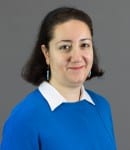 Lecturer in Computer Vision at the University of Bristol. She received her PhD from the University of Leeds (2009). Dima’s researcher interests are in the automatic understanding of object interactions, actions and activities using static and wearable visual (and depth) sensors. Dima is an associate editor of IET Computer Vision, co-chaired BMVC13, is an area chair for BMVC (2014-2017). In 2016, Dima was selected as a Nokia Research collaborator. Lecturer in Computer Vision at the University of Bristol. She received her PhD from the University of Leeds (2009). Dima’s researcher interests are in the automatic understanding of object interactions, actions and activities using static and wearable visual (and depth) sensors. Dima is an associate editor of IET Computer Vision, co-chaired BMVC13, is an area chair for BMVC (2014-2017). In 2016, Dima was selected as a Nokia Research collaborator. |
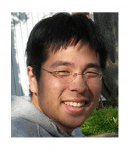 Eng-Jon Ong is a research fellow at the University of Surrey. He received his PhD from Queen Mary University of London. His research interest initially spanned a wide range of tracking problems, from human poses to facial feature tracking. Recently, he has researched novel methods that integrate data-mining concepts into machine learning methods for tackling problems such as lip-reading and sign language recognition. Additionally, he is also actively researching the use of deep learning for use in image retrieval and classification. Eng-Jon Ong is a research fellow at the University of Surrey. He received his PhD from Queen Mary University of London. His research interest initially spanned a wide range of tracking problems, from human poses to facial feature tracking. Recently, he has researched novel methods that integrate data-mining concepts into machine learning methods for tackling problems such as lip-reading and sign language recognition. Additionally, he is also actively researching the use of deep learning for use in image retrieval and classification. |
 Federica Bogo is a scientist in the HoloLens Science team at Microsoft in Cambridge. Before joining Microsoft in 2016, she was a postdoctoral researcher at the Perceiving Systems Department of the Max Planck Institute for Intelligent Systems (Tuebingen, Germany). She received her Ph. D. in Computer Vision in 2015 from the University of Padova (Italy). Her research focuses on human body modelling, 3D mesh registration and medical imaging. Federica Bogo is a scientist in the HoloLens Science team at Microsoft in Cambridge. Before joining Microsoft in 2016, she was a postdoctoral researcher at the Perceiving Systems Department of the Max Planck Institute for Intelligent Systems (Tuebingen, Germany). She received her Ph. D. in Computer Vision in 2015 from the University of Padova (Italy). Her research focuses on human body modelling, 3D mesh registration and medical imaging. |
 Graham Finlayson is the Director of the Colour Lab in the School of Computing Sciences at the University of East Anglia. Graham’s research spans colour image processing, physics-based computer vision and visual perception. He is interested in taking the creative spark of an idea, developing the underlying theory and algorithms and then implementing and commercialising the technology. Colour Lab IP ships in 100s of millions of products. Graham Finlayson is the Director of the Colour Lab in the School of Computing Sciences at the University of East Anglia. Graham’s research spans colour image processing, physics-based computer vision and visual perception. He is interested in taking the creative spark of an idea, developing the underlying theory and algorithms and then implementing and commercialising the technology. Colour Lab IP ships in 100s of millions of products. |
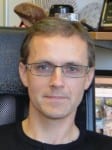 Krystian Mikolajczyk did his undergraduate study at the University of Science and Technology (AGH) in Krakow, Poland. He completed his PhD degree at the Institute National Polytechnique de Grenoble, France, with an internship at the University of British Columbia , Canada. He then worked as a research assistant in INRIA, University of Oxford and Technical University of Darmstadt (Germany), before joining the University of Surrey as a Lecturer, and Imperial College London as a Reader in 2015. His main area of expertise is in image and video recognition, in particular in problems related to image representation and learning. He participated in a number of EU and UK projects in the area of image and video analysis. He published in top-tier computer vision, pattern recognition and machine learning forums. He has served in various roles at major international conferences co-chairing British Machine Vision Conference 2012 and IEEE International Conference on Advanced Video and Signal-Based Surveillance 2013. In 2014 he received Longuet-Higgins Prize awarded by the Technical Committee on Pattern Analysis and Machine Intelligence of the IEEE Computer Society. Krystian Mikolajczyk did his undergraduate study at the University of Science and Technology (AGH) in Krakow, Poland. He completed his PhD degree at the Institute National Polytechnique de Grenoble, France, with an internship at the University of British Columbia , Canada. He then worked as a research assistant in INRIA, University of Oxford and Technical University of Darmstadt (Germany), before joining the University of Surrey as a Lecturer, and Imperial College London as a Reader in 2015. His main area of expertise is in image and video recognition, in particular in problems related to image representation and learning. He participated in a number of EU and UK projects in the area of image and video analysis. He published in top-tier computer vision, pattern recognition and machine learning forums. He has served in various roles at major international conferences co-chairing British Machine Vision Conference 2012 and IEEE International Conference on Advanced Video and Signal-Based Surveillance 2013. In 2014 he received Longuet-Higgins Prize awarded by the Technical Committee on Pattern Analysis and Machine Intelligence of the IEEE Computer Society. |
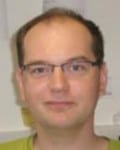 Michal Mackiewicz is a Lecturer in Computer Science at the School of Computing Sciences, University of East Anglia. He received his MSc in Telecommunications from the University of Science and Technology (AGH), Krakow in 2003 and PhD from the University of East Anglia in 2007. His research interests include colour image processing, colour perception and medical imaging. Michal Mackiewicz is a Lecturer in Computer Science at the School of Computing Sciences, University of East Anglia. He received his MSc in Telecommunications from the University of Science and Technology (AGH), Krakow in 2003 and PhD from the University of East Anglia in 2007. His research interests include colour image processing, colour perception and medical imaging. |
|
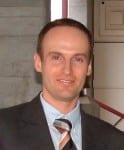
Nicola Bellotto is a Reader in Computer Science at the University of Lincoln, and a member of the Lincoln Centre for Autonomous Systems (L-CAS). His research interests in autonomous systems range from mobile robotics to machine perception and intelligence, including active vision, sensor fusion, and qualitative spatial reasoning. Before joining Lincoln, he was a researcher in the Active Vision Lab at the University of Oxford. Nicola is a Principal Investigator in two EU H2020 projects and the recipient of a Google Faculty Research Award. |
 Nicolas Pugeault studied Engineering and Computer Science in Paris, did an MSc in Computational Intelligence at the University of Plymouth, and obtained a PhD in computer vision from the University of Goettingen in 2008. After graduating he has worked on a number of EU projects on cognitive vision and developmental robotics first at the University of Edinburgh, then the University of Southern Denmark and the Centre for Vision, Speech and Signal Processing (CVSSP) at Surrey. Since from the University of Goettingen in 2008. After graduating he has worked on a number of EU projects on cognitive vision and developmental robotics first at the University of Edinburgh, then the University of Southern Denmark and the Centre for Vision, Speech and Signal Processing (CVSSP) at the University of Surrey. Since January 2016, he is a Lecturer in Computer Vision and Machine Learning with the University of Exeter. His research interests include cognitive systems, machine learning, and computer vision. Nicolas Pugeault studied Engineering and Computer Science in Paris, did an MSc in Computational Intelligence at the University of Plymouth, and obtained a PhD in computer vision from the University of Goettingen in 2008. After graduating he has worked on a number of EU projects on cognitive vision and developmental robotics first at the University of Edinburgh, then the University of Southern Denmark and the Centre for Vision, Speech and Signal Processing (CVSSP) at Surrey. Since from the University of Goettingen in 2008. After graduating he has worked on a number of EU projects on cognitive vision and developmental robotics first at the University of Edinburgh, then the University of Southern Denmark and the Centre for Vision, Speech and Signal Processing (CVSSP) at the University of Surrey. Since January 2016, he is a Lecturer in Computer Vision and Machine Learning with the University of Exeter. His research interests include cognitive systems, machine learning, and computer vision. |
 Robert Deaves is a Robotics System Architect responsible for the development of next generation robotic products at Dyson. He has 30 years industrial experience gained in the defence (BAE Systems), microelectronic (STMicroelectronics) and consumer electronics (Dyson) industries. He obtained PhD/MSc degrees from Bristol University, a BEng from Cardiff University and is a chartered engineer through the IET/INCOSE. Rob has close association with Imperial College being an active participant at the Dyson Robotics Laboratory and a member of the industrial advisory committee for the HiPEDS doctoral training centre. Rob is an industrial member of the EPSRC College and serves on the steering committee of two EPRSC funded projects. He was the recipient of a Royal Commission of 1851 Industrial Fellowship award, Cardiff University Scholarship and a BAE Systems Innovation award for his work on decentralized systems and simultaneous localization and map building (SLAM). Robert Deaves is a Robotics System Architect responsible for the development of next generation robotic products at Dyson. He has 30 years industrial experience gained in the defence (BAE Systems), microelectronic (STMicroelectronics) and consumer electronics (Dyson) industries. He obtained PhD/MSc degrees from Bristol University, a BEng from Cardiff University and is a chartered engineer through the IET/INCOSE. Rob has close association with Imperial College being an active participant at the Dyson Robotics Laboratory and a member of the industrial advisory committee for the HiPEDS doctoral training centre. Rob is an industrial member of the EPSRC College and serves on the steering committee of two EPRSC funded projects. He was the recipient of a Royal Commission of 1851 Industrial Fellowship award, Cardiff University Scholarship and a BAE Systems Innovation award for his work on decentralized systems and simultaneous localization and map building (SLAM). |
 Roy Davies is Emeritus Professor of Machine Vision at Royal Holloway, University of London. His interests include low-level vision, surveillance, vehicle guidance and crime detection. He has published more than 200 papers and three books – Electronics, Noise and Signal Recovery (1993), Image Processing for the Food Industry (2000), and Computer and Machine Vision: Theory, Algorithms, Practicalities (4th edition, 2012). Roy was awarded BMVA Distinguished Fellow in 2005 and Fellow of the International Association of Pattern Recognition in 2008. Roy Davies is Emeritus Professor of Machine Vision at Royal Holloway, University of London. His interests include low-level vision, surveillance, vehicle guidance and crime detection. He has published more than 200 papers and three books – Electronics, Noise and Signal Recovery (1993), Image Processing for the Food Industry (2000), and Computer and Machine Vision: Theory, Algorithms, Practicalities (4th edition, 2012). Roy was awarded BMVA Distinguished Fellow in 2005 and Fellow of the International Association of Pattern Recognition in 2008. |
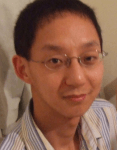 Tae-Kyun Kim is an Associate Professor and the leader of Computer Vision and Learning Lab at Imperial College London, UK. He obtained his PhD from Univ. of Cambridge in 2008 and Junior Research Fellowship in Cambridge for 2007-2010. His research interests primarily lie in decision forests (tree-structure classifiers) and linear methods for: articulated hand pose estimation, face recognition by image sets and videos, 6D object pose estimation, robot vision, activity recognition, object detection/tracking, which lead to novel active and interactive visual sensing. Tae-Kyun Kim is an Associate Professor and the leader of Computer Vision and Learning Lab at Imperial College London, UK. He obtained his PhD from Univ. of Cambridge in 2008 and Junior Research Fellowship in Cambridge for 2007-2010. His research interests primarily lie in decision forests (tree-structure classifiers) and linear methods for: articulated hand pose estimation, face recognition by image sets and videos, 6D object pose estimation, robot vision, activity recognition, object detection/tracking, which lead to novel active and interactive visual sensing. |
 Tim Cootes completed a degree in Mathematics & Physics and then a PhD in Civil Engineering at Exeter. He moved to the University of Manchester in 1991 and has been there ever since, becoming a Professor of Computer Vision in 2006. His research focuses on statistical models of shape and appearance and their applications in computer vision and medical image analysis. He has published over 170 peer-review papers. Tim Cootes completed a degree in Mathematics & Physics and then a PhD in Civil Engineering at Exeter. He moved to the University of Manchester in 1991 and has been there ever since, becoming a Professor of Computer Vision in 2006. His research focuses on statistical models of shape and appearance and their applications in computer vision and medical image analysis. He has published over 170 peer-review papers. |
 Toby Breckon is currently a Reader (UK Associate Professor) within the School of Engineering and Computer Sciences, Durham University (UK). His key research interests lie in the domain of computer vision and image processing and he leads a range of research activity in this area. Dr. Breckon holds a PhD in informatics (computer vision) from the University of Edinburgh (UK). He has been a visiting member of faculty at the Ecole Supérieure des Technologies Industrielles Avancées (France), Northwestern Polytechnical University (China), Shanghai Jiao Tong University (China) and Waseda University (Japan). Dr. Breckon is a Chartered Engineer, Chartered Scientist and a Fellow of the British Computer Society. In addition, he is an Accredited Senior Imaging Scientist and Fellow of the Royal Photographic Society. He led the development of image-based automatic threat detection for the 2008 UK MoD Grand Challenge winners [R.J. Mitchell Trophy, (2008), IET Innovation Award (2009)]. His work is recognised as recipient of the Royal Photographic Society Selwyn Award for early-career contribution to imaging science (2011). Toby Breckon is currently a Reader (UK Associate Professor) within the School of Engineering and Computer Sciences, Durham University (UK). His key research interests lie in the domain of computer vision and image processing and he leads a range of research activity in this area. Dr. Breckon holds a PhD in informatics (computer vision) from the University of Edinburgh (UK). He has been a visiting member of faculty at the Ecole Supérieure des Technologies Industrielles Avancées (France), Northwestern Polytechnical University (China), Shanghai Jiao Tong University (China) and Waseda University (Japan). Dr. Breckon is a Chartered Engineer, Chartered Scientist and a Fellow of the British Computer Society. In addition, he is an Accredited Senior Imaging Scientist and Fellow of the Royal Photographic Society. He led the development of image-based automatic threat detection for the 2008 UK MoD Grand Challenge winners [R.J. Mitchell Trophy, (2008), IET Innovation Award (2009)]. His work is recognised as recipient of the Royal Photographic Society Selwyn Award for early-career contribution to imaging science (2011). |
 Xianghua Xie is an Associate Professor at Swansea University. His research covers various aspects of computer vision and pattern recognition. He was a recipient of an RCUK academic fellowship. Some of his recent works include detecting abnormal patterns in complex visual and medical data, assisted diagnosis using automated image analysis, fully automated volumetric image segmentation, registration and motion analysis, and machine understanding of human interaction. He has published over 100 fully refereed research publications and (co-)edited several conference proceedings. He is an associate editor of IET Computer Vision and has chaired a number of conferences, including BMVC 2015. Xianghua Xie is an Associate Professor at Swansea University. His research covers various aspects of computer vision and pattern recognition. He was a recipient of an RCUK academic fellowship. Some of his recent works include detecting abnormal patterns in complex visual and medical data, assisted diagnosis using automated image analysis, fully automated volumetric image segmentation, registration and motion analysis, and machine understanding of human interaction. He has published over 100 fully refereed research publications and (co-)edited several conference proceedings. He is an associate editor of IET Computer Vision and has chaired a number of conferences, including BMVC 2015. |

